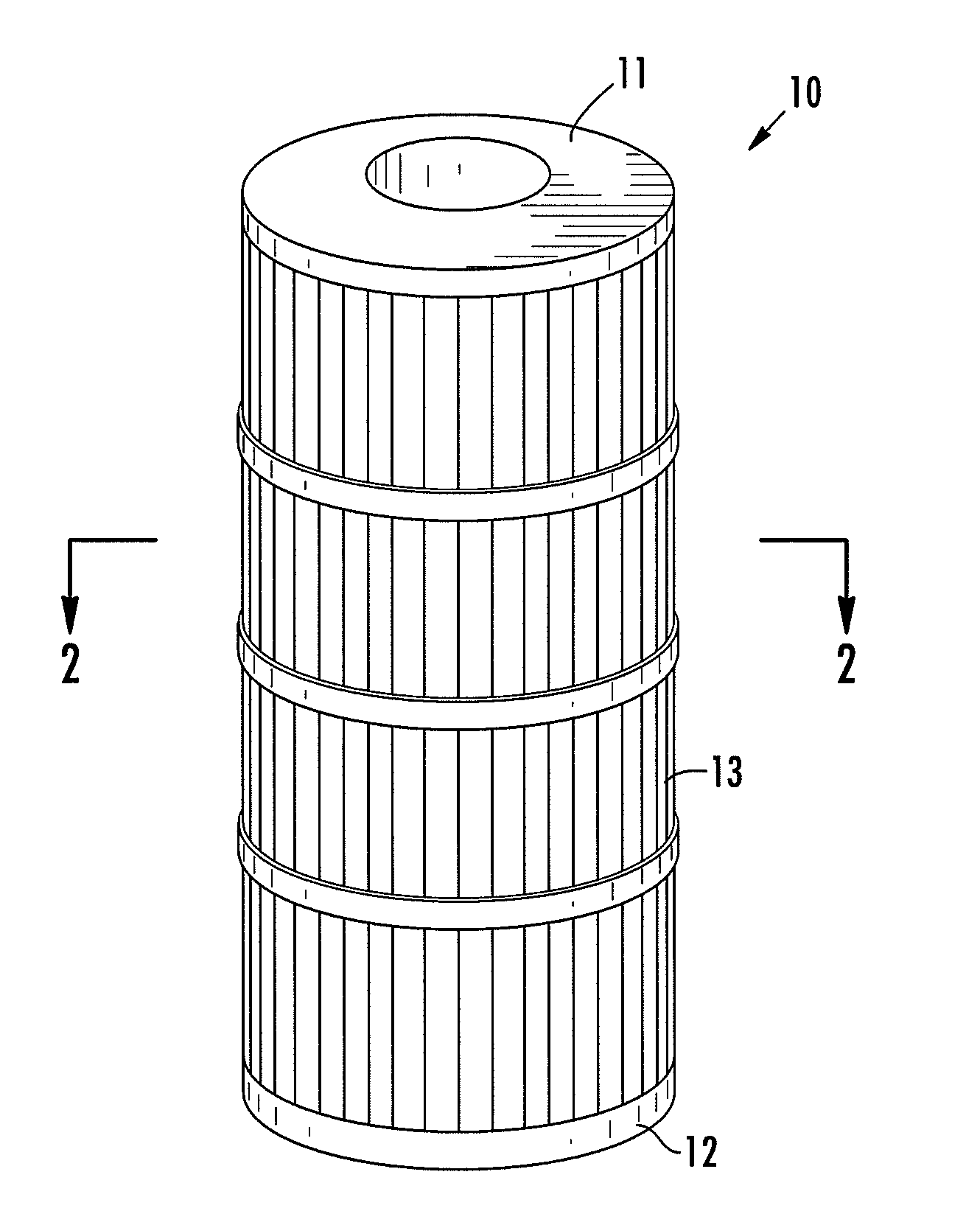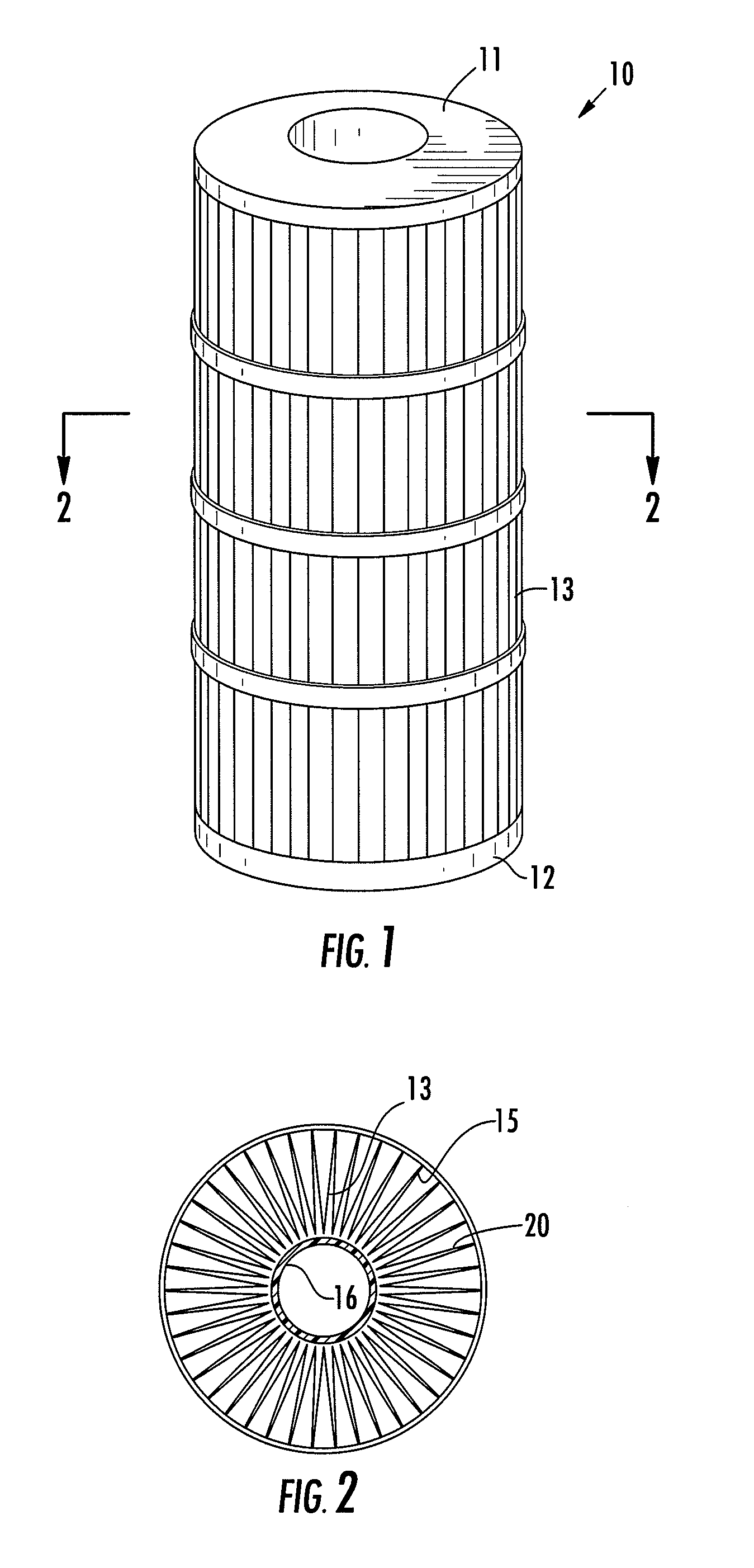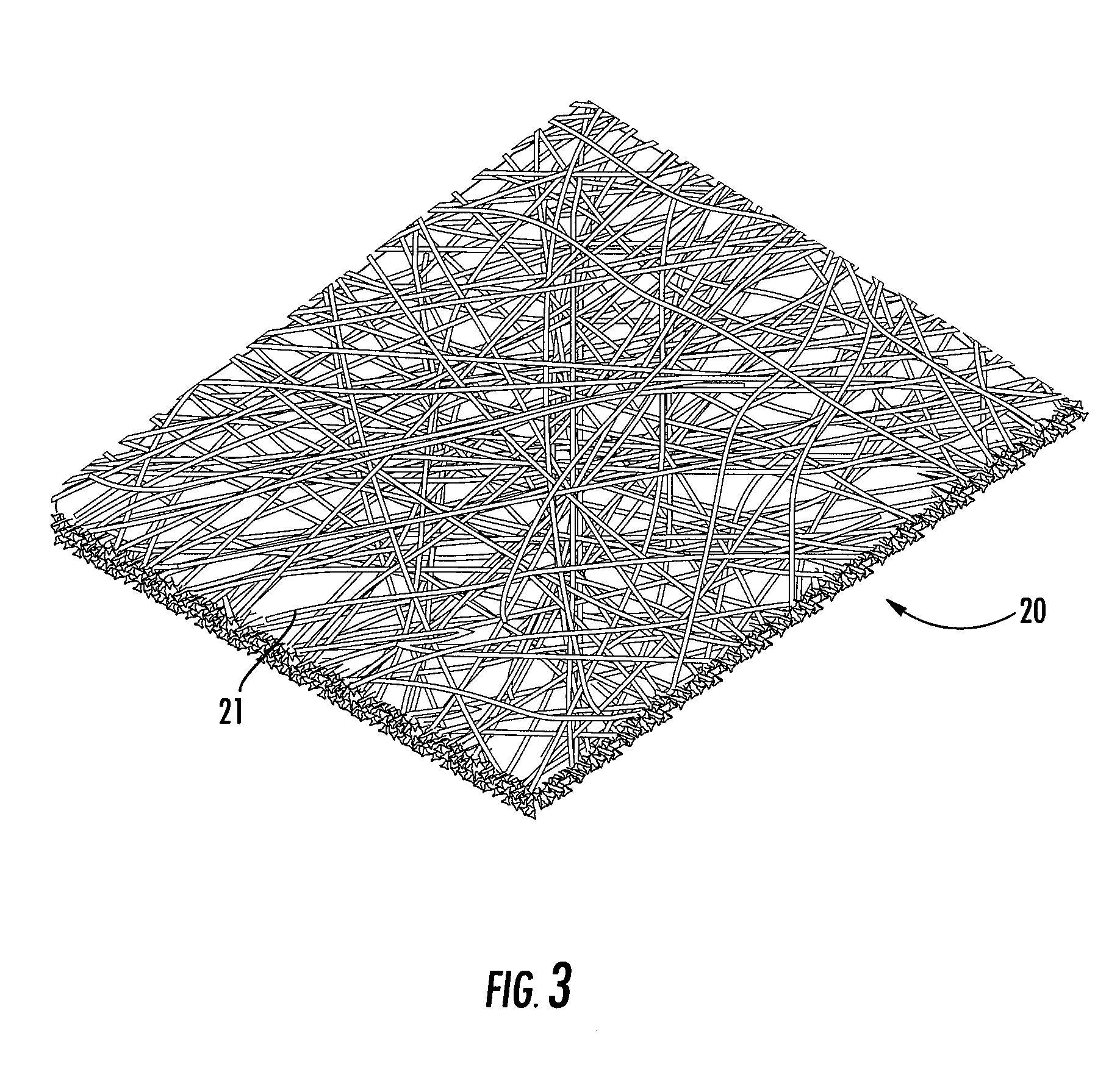Antimicrobial multicomponent filtration medium
- Summary
- Abstract
- Description
- Claims
- Application Information
AI Technical Summary
Benefits of technology
Problems solved by technology
Method used
Image
Examples
example 1
[0052]Three different spunbond nonwoven fabrics were prepared in accordance with the invention. The fabric samples comprised substantially continuous bicomponent filaments that were thermally bonded to one another. The bicomponent filaments had a sheath / core configuration wherein the weight ratio of the sheath component to the core component was about 30:70. The sheath comprised a high density polyethylene resin, which is available from Dow Plastics. The high density polyethylene resin had a density of 0.95 g / cm3 and a melt index of 17 g / 10 min. The core is comprised of polyethylene terephthalate, which is available from DuPont. The polyethylene terephthalate can have a density of 1.3 to 1.4 g / cm3 and an intrinsic viscosity of 0.58 to 0.72 DI. / g. Samples 1 and 2 included an antimicrobial agent in the sheath in an amount from about 0.3 wt. %, based on the weight of the first polymer component. The antimicrobial agent is triclosan, which is available from Microban® under the product n...
example 2
[0054]The filtration efficiency as a function of particle diameter for Samples 1-3 were compared to the control sample (Control 1). Efficiency was measured by passing a liquid medium having latex particles through the samples at a flow rate of 1 L / min. The liquid medium contained 5,000 particles per mL. The filtration efficiencies of the samples are calculated with the following equation:
Feff=Cup-CdownCup×100%
[0055]wherein: Feff=Efficiency;[0056]Cup=Particle Concentration Upstream of Filter, and[0057]Cdown=Particle Concentration Downstream of Filter.
[0058]The comparative results are shown graphically in FIGS. 6 through 8. The graphs show that the filtration medium of the invention (Samples 1-3) exhibit excellent filtration efficiencies and generally have better initial filtration in comparison to the control sample.
example 3
[0059]A spunbond nonwoven fabric with a basis weight of 34 grams per square meter (gsm) is formed from round cross-section sheath-core continuous bicomponent filaments. The sheath comprises a high density polyethylene resin (density of 0.95 g / cm3 and a melt index of 17 g / 10 min) containing about 0.3 wt. % of the antimicrobial agent is triclosan, which is available from Microban®. The core component comprises polyethylene terephthalate. The filaments have a ratio of sheath to core by weight of 20 / 80. The fabric is prepared by extruding the two polymer components through separate extruders as in Example 1, followed by area bonding the nonwoven web in a through-air bonder.
[0060]Three layers of this fabric are combined and directed through a heated calender nip comprised of two smooth steel rolls having a temperature of 200° C. The resulting composite nonwoven fabric filtration medium has an overall basis weight of 102 gsm and a stiffness that allows it to be pleated to form crisp, shap...
PUM
| Property | Measurement | Unit |
|---|---|---|
| Length | aaaaa | aaaaa |
| Fraction | aaaaa | aaaaa |
| Percent by mass | aaaaa | aaaaa |
Abstract
Description
Claims
Application Information
 Login to View More
Login to View More - Generate Ideas
- Intellectual Property
- Life Sciences
- Materials
- Tech Scout
- Unparalleled Data Quality
- Higher Quality Content
- 60% Fewer Hallucinations
Browse by: Latest US Patents, China's latest patents, Technical Efficacy Thesaurus, Application Domain, Technology Topic, Popular Technical Reports.
© 2025 PatSnap. All rights reserved.Legal|Privacy policy|Modern Slavery Act Transparency Statement|Sitemap|About US| Contact US: help@patsnap.com



